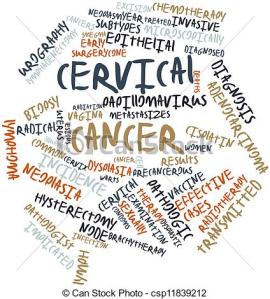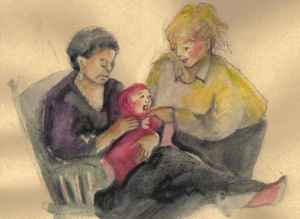
It was the end of May, and my life was finally getting back to normal, after our early May wedding. By the time we returned from our whirlwind honeymoon in Bali, I already had a new job lined up, and started that same week. It began to sink in that I was now a personal assistant to a super awesome guy, but that I had found myself in an “office job”. However, if you know me well then you know I have an affinity for organization, planning, and office supplies. One night I was complaining about feeling like I was yet again, a hamster on a wheel. Then my husband said to me, “well are you still doing that doula thing?”. Who could’ve known that simple question, would pose such a challenge for me, and give me the kick in the pants that I needed. I got defensive of course, and explained how overwhelmed I was after a year of wedding planning, and then traveling….AND then starting a new job. Once I spoke out loud what was truly holding me back, I was almost instantly set free.
Needless to stay, the next day I reserved a spot in a Birth and Beyond lactation class, purchased my DONA postpartum doula certification packet, and signed up for Kathrin Auger’s postpartum doula workshop. In one day I managed to drain my account of nearly $600 (which had dire consequences at the grocery store later that day!). In that exact moment I thanked God that I was given this opportunity to have a steady income, while pursuing my ultimate career path.
My head was spinning! I was finally doing it. I cracked open my Mothering the New Mother book, and I’m not lying when I say that my chosen bookmark was a 20% off coupon from CVS (it expired April 19th!). I had fallen behind, and the stress of marrying the love of my life had taken over. Though might I add, the love of my life was the one that reinvigorated me to do what I love.
Mothering the New Mother is an excellent ice breaker, and is on the required reading list for certification. The book is written to help women better understand the postpartum period, and the necessity for nurturing in that said period. One of my favorite chapters is one that covers a span of several different countries, and has excerpts written by a mother from each country. There is such an insight to each culture, and it really makes you wish we had the same postpartum outlook for new mothers in this country. For example, in Colombia a mother writes that pregnancy and births are not treated as an illness, rather a sign of health and beauty. Preparation for birth comes from eating lots of soups, and drinking liquids. Once the baby is born they immediately place the baby to the breast, to help the placenta descend. Then for fourty days the mother is tended to, so that her only focus is staying rested, and breastfeeding her baby. She does not shower head to toe in that “resting period”, rather she is sponge bathed by her caretakers. They brush through the oils in her hair, and massage her body with special oils and herbs. She has constant visitors, and gifts of food, and the main focus is always her. They believe that through nurturing her, she can in turn nurture her baby. What a beautiful and refreshing way to look at a new mother, respecting her for the warrior she truly is. Lifting her spirit, and feeding her soul. With that she is able to heal not only physically, but emotionally. This sentiment is the common denominator amongst these mothers, and from country to country. Except for the United States.
In our great country, women have been sold a lie that we can do it all. Birth a baby, go home the same day, do the housework, and return to work the following day. Barely surviving the first crucial weeks of no rest, and loss of bonding time with this new little human. After the “It’s a Boy/Girl” balloons lose helium, and the flowers die in their vases, the visitors become few and far between. Most of the time they visit just to see the baby, and you are lucky if they genuinely ask how you are feeling. When the loneliness sets in, and the possible frustration with breastfeeding commences, all of the sudden your baby becomes inconsolable. Sounds like a crisis meltdown in the making, and I have heard and read about it often enough. In that time, it is absolutely crucial that a new mother (and father even), have someone there that is genuinely caring for THEM. Everything from loading the dishwasher, to doing the laundry, tidying up the house, and making sure mama is well fed and hydrated. It also important to make sure the mother is breastfeeding successfully, and referring her to a lactation consultant if she is not.
Which brings me to my next development! I attended my first class in nearly 8-years post highschool, and it was with Cheryl Baker, CCE, CD, CLE, of Birth and Beyond in Santa Monica. The three hour class was geared towards parents, and I was the only student in attendance. However, I felt extremely honored to sit in and listen to the questions and concerns those new mothers had about breastfeeding. Cheryl was able to answer each question, as well as shoot down any myths in relation to breastfeeding. It is amazing how much a woman’s outlook on breastfeeding, is greatly affected by those around her. For example, if she was told that no one in her family could produce milk, she might assume it is genetic and that she will not be able to provide for her baby. Without a support system, and a lactation consultant to show her how to breastfeed, she may never try. Cheryl reinforced the importance of breastfeeding, not only for the antibodies it gives to the baby. When mothers nurse their babies, oxytocin is released, and promotes essential bonding. Breastfeeding works on supply and demand, when a mother nurses often, she produces milk more often. In order to ensure that a proper deep latch is in place, the baby should be positioned comfortably. With the babies lips flared and covering the aereola, tongue down and forward, and the nipple angled upwards in the mouth. There should be no flattening or rippling of the breast tissue, and the nipple should not be sliding in and out. The nursing rythym should sound like several sucks, swallow, breath, and then relax. However without a good latch, a baby is not successfully nursing, therefore not contributing to the milk flow. At that point, many mothers begin to assume their supply is low, and start supplementing with formula bottles. The key is really to stay in contact with your postpartum doula, and lactation consultant so that when issues arise, you feel comfortable seeking their help. When you have an advocate that supports your decision, and guides you to what you want to achieve, you will be successful. There are many ways to ensure a special breastfeeding experience, that is memorable for all the right reasons. A proper latch is just the beginning! I also learned that pillows such as the Brest Friend are actually meant to physically support the mother while nursing, and can be a huge help. Silly me, I actually thought the Boppy pillow was for nursing mothers! According to Cheryl, it was actually developed as a pillow to prop up babies, and to be used as a sleep pillow for mothers. I have heard from multiple sources that it didn’t work for them, I wondered why, and now I know! A good bra is also very important in terms of physical support, and comfortable accessibility. Medela makes seamless nursing bras, and they are much more affordable than our Victoria Secret Bombshells. To broach on the topic of accessibility, sometimes privacy is also an issue. Bebe au Lait with their clever name, promise to provide discretion while nursing, without forgoing their fashionable prints. In this modern day we have been given so many tools to make breastfeeding as successful, and comfortable as possible. However, never forget the importance of having a mentor that can give you informed and nonjudgemental advice, allowing you to feed your baby in whatever way works best for you.
Out of breath with excitement! Look forward to posting again 🙂









